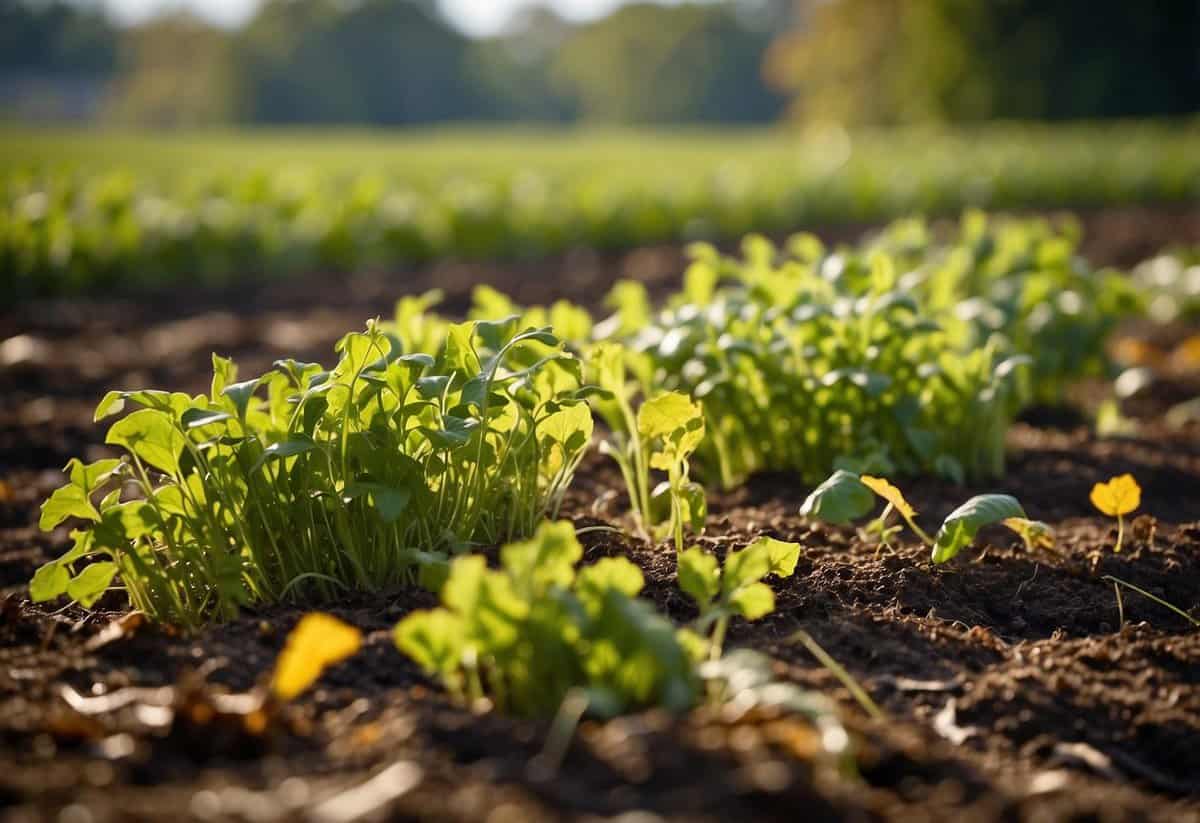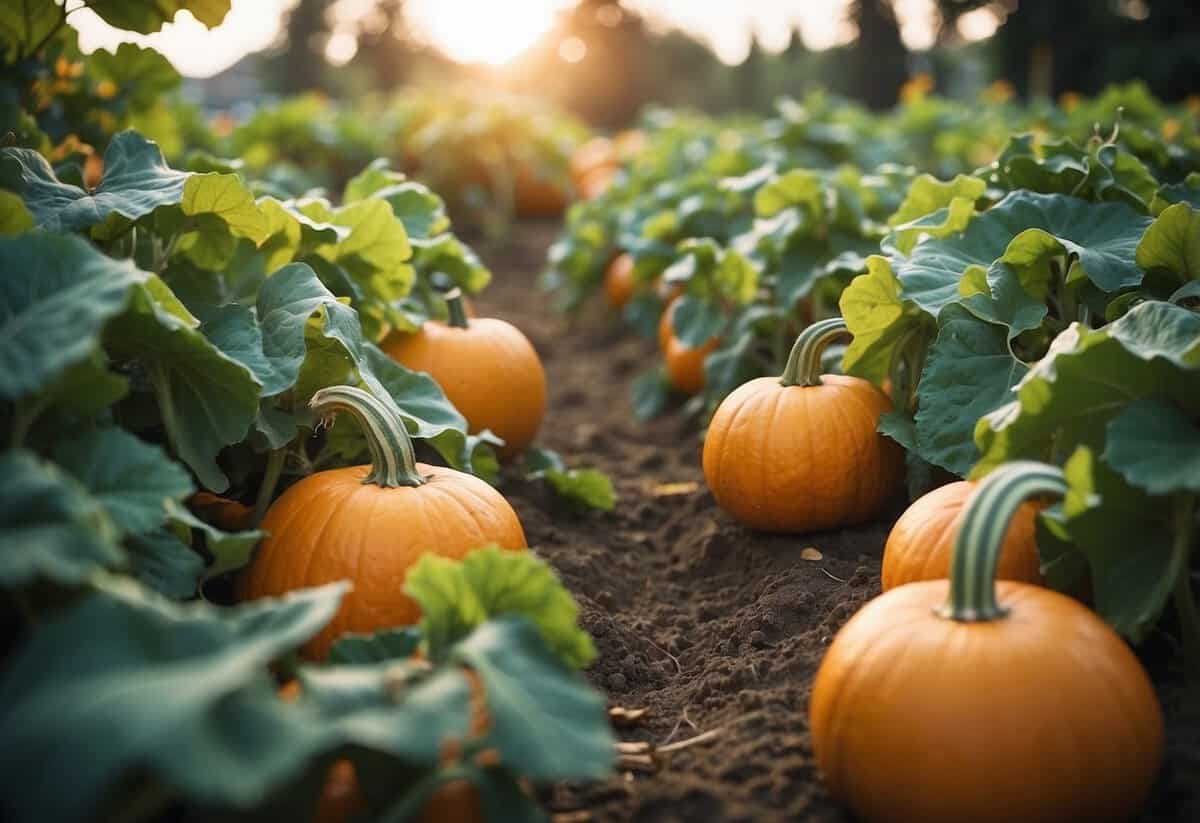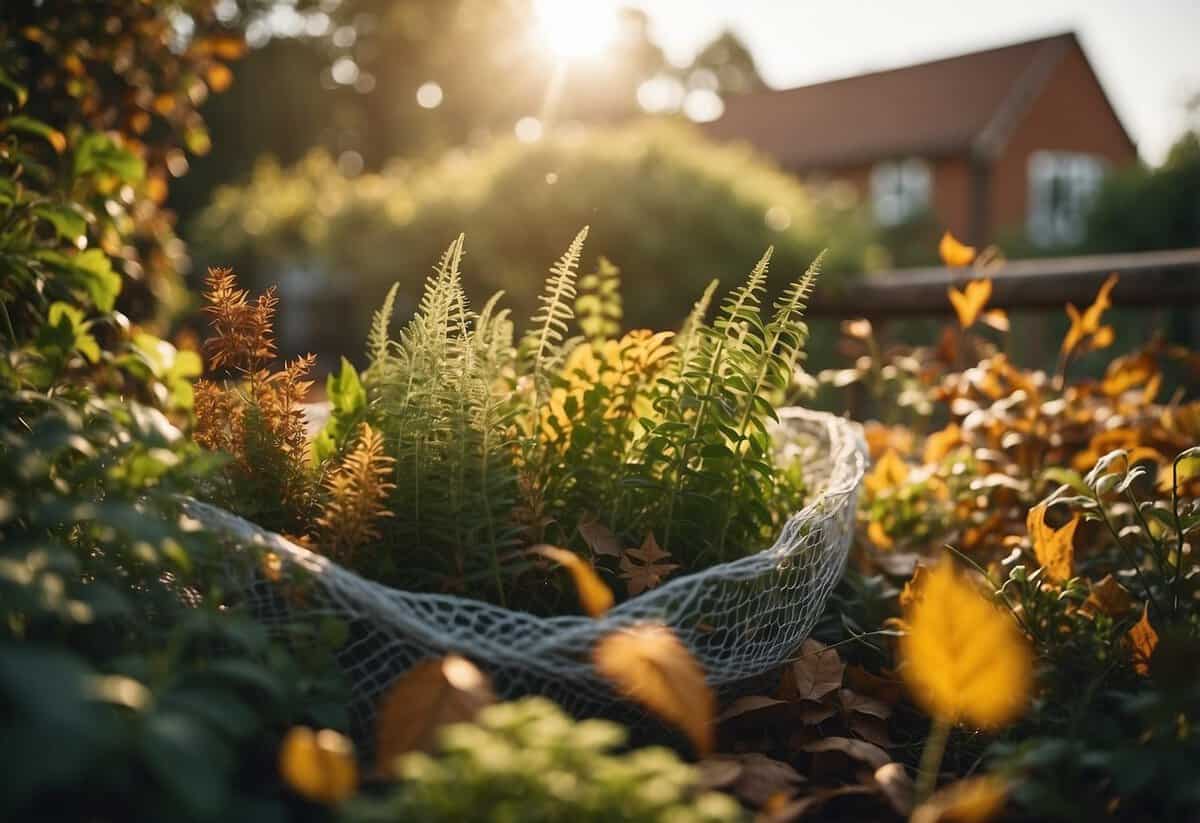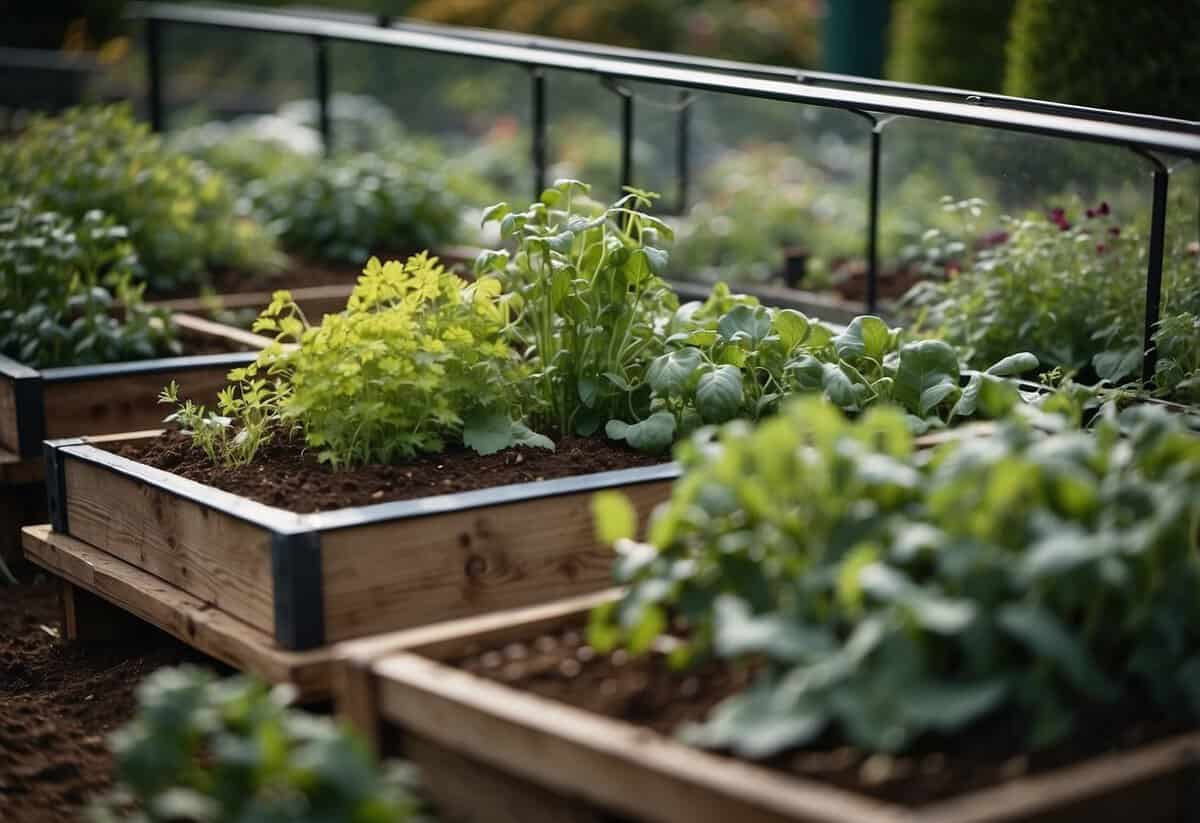Autumn Kitchen Garden Tips: Boost Your Harvest This Season
Autumn is a fantastic time to start working on your kitchen garden. With cooler temperatures and plenty of moisture, it’s an ideal season for planting and prepping for the months ahead. You can transform your garden into a productive, beautiful space that yields delicious veggies and herbs.

During the fall, you have the opportunity to take advantage of specific weather conditions and plant varieties that thrive in this season. With some thoughtful planning, you ensure your garden remains bountiful and healthy, setting the stage for success year-round.
Add Organic Compost

Add organic compost to your autumn kitchen garden to enrich the soil. Fall is a great time to do this because of the abundance of leaves and other organic materials.
Compost improves soil structure, helping it retain moisture and nutrients. Sprinkle compost on top of the soil around existing plants and spread evenly with a rake. This technique is simple and effective.
Shred your compost materials and mix them in a 3:1 brown-to-green ratio. This means using three parts leaves to one part kitchen scraps. This balance ensures proper decomposition.
2) Plant Garlic Cloves

Planting garlic in the fall is a great idea. Start by breaking apart the garlic bulb into individual cloves. Make sure to leave the papery skin on each clove.
Prepare your soil by mixing in some bone meal or an organic fertilizer. Next, place each clove into the soil, about 6 to 8 inches apart and 2 inches deep, with the wider side down. For more tips, you can check out The Spruce.
3) Grow Kale

Kale is a great choice for your autumn kitchen garden. It thrives in cooler temperatures and is easy to grow. Start seeds indoors about six weeks before the last spring frost.
When growing kale in pots or containers, use a nutrient-rich soil with a neutral pH between 6.5-6.8. This ensures healthy plants.
To harvest, use gardening shears to cut stems from the side, not the center, of the plant. Store fresh kale leaves by wrapping them in a paper towel inside an airtight bag. This keeps them fresh for up to a week.
4) Use Row Covers

Using row covers can protect your autumn kitchen garden from frost. These lightweight fabrics help keep your plants warm during cool nights.
Row covers are made from materials like polyester or polypropylene. They are easy to drape over your crops. You can easily find them in various thicknesses.
Row covers let sunlight and water through, so your plants stay healthy. Look into using row covers for vegetables like spinach, greens, and tomatoes to extend your harvest season. They are also reusable if stored properly, making them a good investment for your garden.
5) Consider Cover Crops

Cover crops can significantly boost your autumn kitchen garden. They help improve soil health, making it easier to grow vegetables and herbs.
Planting cover crops like oats, annual ryegrass, or clover protects the soil from erosion. They also add vital nutrients back into the ground.
Clear your garden bed of debris, evenly broadcast the seeds, and lightly rake them in. Using cover crops makes your garden more sustainable and ready for the next growing season.
For tips on planting cover crops, look into Grow a Good Life. Various species for different regions are listed on Epic Gardening.
6) Mulch Strawberry Plants

Mulching your strawberry plants is a great way to protect them from winter cold. In late fall, gather materials like chopped straw or pine needles. Spread a layer about 2-3 inches thick over the plants.
Wait until the soil temperature is consistently 40°F or below for three days straight. This ensures that the plants are dormant. Mulch helps the roots and crowns stay safe and healthy through the winter months.
In spring, remove the mulch when the plants start to leaf out. This will help them grow strong and produce plenty of tasty strawberries.
7) Harvest Pumpkins

Harvesting pumpkins is an exciting part of your autumn garden. Look for pumpkins with hard, mature skin that resists a fingernail scratch. The stem should be firm and starting to harden.
Use sharp pruners to cut the pumpkin from the vine, leaving a 3-4 inch stem. This helps prevent rot and decay. Avoid picking pumpkins by their stems to keep them intact.
If you expect nighttime temperatures to drop into the 40s, it’s time to pick your pumpkins. A light frost won’t harm them, but a hard frost can cause damage and decay.
8) Protect Herbs

As autumn sets in, your kitchen herbs still need some love. Start by moving potted herbs indoors to shield them from frost. Place them by a south-facing window to get at least six hours of sunlight. Cover outdoor herbs with a cloth during cold nights to keep them warm.
Keep an eye on indoor humidity levels. Dry indoor air can stress your herbs. Use a humidity tray or spray them with water occasionally. For more detailed tips on indoor care, visit 15 Top Tips for Kitchen Herb Gardens.
9) Lettuce Successions

You can enjoy fresh lettuce throughout the autumn by planning successions. Plant new lettuce seeds every two weeks. This ensures you always have a fresh batch ready to harvest.
Choose varieties suited for cooler temperatures. Butterhead and leaf lettuces work well for autumn gardens. Make sure to water your lettuce consistently to keep the leaves tender.
For best results, plant your lettuce in partial shade. This helps prevent the plants from bolting. To get the most out of your space, try interplanting lettuce with other quick-growing vegetables like radishes.
10) Install Cold Frames

Cold frames are a great way to extend your growing season into fall and even winter. They protect your plants from frost and help maintain a warmer temperature inside.
You can make cold frames from various materials like wood or even straw bales. For the top, use twin wall polycarbonate sheets or old windows.
Position your cold frames where they will get the most sun. Avoid placing them in the shadow of buildings or trees. Whether you put them on raised beds or directly on the soil, they will help your garden thrive in cooler months.
Planting Autumn Vegetables

When planting an autumn vegetable garden, it’s important to select crops that can withstand cooler weather and prepare your soil to support these plants. Each vegetable type has unique needs, so choose wisely and ready your garden for success.
Choosing The Right Crops
For autumn, go for veggies that are frost-tolerant and have shorter growing seasons. Root vegetables such as beets and radishes handle the cold well. Beets can survive a heavy frost and radishes mature quickly.
Leafy greens like spinach, Swiss chard, and lettuces thrive in cooler temperatures. Salad greens, including leaf lettuces, are hardy and can be harvested in 45 to 50 days. They’re quick and can be picked at various stages of growth.
Brassicas such as broccoli and cauliflower are also ideal since they can endure light frosts. Broccoli takes about 55 days to mature and cauliflower needs around 10 weeks. Planting these early ensures a full harvest before winter sets in.
Preparing The Soil
Autumn gardens need nutrient-rich, well-drained soil. Start by removing any leftover summer plants and clear out weeds. This clears space and reduces competition for nutrients.
Add compost or aged manure to boost organic matter. These additions help improve soil structure and provide essential nutrients. Spread a 2-3 inch layer over your garden bed and work it into the soil.
To avoid compaction, avoid walking directly on your garden beds. Use mulch to retain moisture and protect roots. Keep the soil consistently moist but not waterlogged. Regular watering helps your young plants establish strong root systems before the colder weather arrives.
Maintaining Your Garden

Keeping your autumn kitchen garden healthy requires proper watering and effective pest control. These steps are essential to ensure your plants thrive through the season.
Watering Tips
Watering your garden in autumn can be tricky. Cooler temperatures mean you won’t need to water as often, but it’s still important to keep the soil moist. Watering in the morning is best because it allows the plant to dry before night, reducing the risk of disease.
Use a soaker hose or drip irrigation system to water at the base of the plants. This helps avoid wetting leaves, which can lead to mold and mildew. Check your soil frequently; it should be damp but not soaking. If the top inch of soil feels dry, it’s time to water.
Mulching helps retain moisture. Apply a layer of organic mulch like straw or leaves around your plants. This will keep roots warm and conserve water. Remember, avoid overwatering as it can lead to root rot.
Pest Control And Protection
Autumn brings its own set of pests and bugs. Keeping them under control is crucial. Regularly inspect your plants for signs of damage or infestation. Look under leaves and at the stem base for common pests like aphids and spider mites.
Use natural pest control methods such as introducing beneficial insects like ladybugs that eat harmful pests. Another effective way is to use neem oil sprays or insecticidal soap. Avoid harsh chemical pesticides, as they can harm beneficial insects and the ecosystem of your garden.
Protect your plants from larger animals too. Use physical barriers like netting or fencing. For smaller pests, row covers can help keep insects at bay while still allowing sunlight and water to reach your plants. Regular cleaning up of fallen leaves and debris also helps in preventing pests from settling in.







